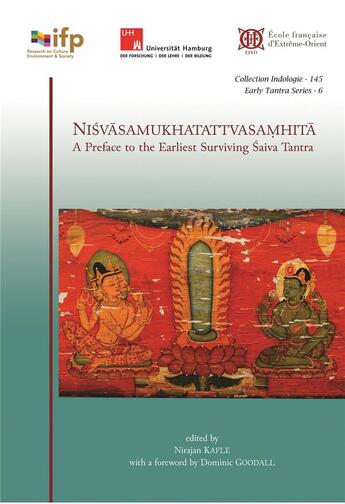Résumé:
This volume presents the first edition, along with an English translation, of a Sanskrit work of perhaps the seventh century surviving in a single ninth-century Nepalese witness: the Nisvasamukhatattvasamhita. It would be difficult to exaggerate the usefulness of this primary source for the... Voir plus
This volume presents the first edition, along with an English translation, of a Sanskrit work of perhaps the seventh century surviving in a single ninth-century Nepalese witness: the Nisvasamukhatattvasamhita. It would be difficult to exaggerate the usefulness of this primary source for the history of the Saiva religions. Ostensibly an introduction to the Nisvasamukhatattvasamhita, it purports to sketch the religious context in which the Mantramarga emerged. In so doing, it provides invaluable help in mapping the contours of the relations between four different traditions of early Saivism, namely: 1) that of the Pancarthika Pasupatas, 2) that of the Lakulas (here lokatita), 3) the the Mantramarga and 4) preMantramarga "lay" practices. The work is bracketed by a detailed introduction and an appendix presenting material borrowed into the Sivadharmasangraha.
Ce volume présente la première édition, accompagnée d'une traduction anglaise, d'un ouvrage sanskrit du VIIe siècle conservé dans un unique manuscrit népalais du IXe siècle : la Nisvasamukhatattvasamhita. Il serait difficile d'exagérer l'importance de ce texte pour l'histoire des courants religieux shivaïtes. Se présentant comme une préface à la Nisvasatattvasamhita, il permet en effet de se représenter le contexte religieux dans lequel émerge le Mantramarga, le courant dominant du shivaïme tantrique dans la seconde moitié du premier millénaire. Il fournit ainsi une aide précieuse pour comprendre les relations entre quatre traditions différentes du shivaïsme ancien, à savoir : 1) celle des Pasupatas pancarthika, 2) celle des Lakulas (lokatita), 3) le Mantramarga ; et 4) les pratiques « laïques » antérieures au Mantramarga. Le texte édité est précédé par une introduction détaillée et suivi par une édition des emprunts textuels importants attestés dans un texte légèrement plus tardif, le Sivadharmasangraha.
About the author
Nirajan Kafle is a researcher of the ERC Sivadharma Project in Naples. He defended his doctorate in Lei-den (2015), where he then joined the NWO project 'From Universe of Visnu to Universe of Siva. Previously, he was researcher at the NGMCP (2002-7, 2011-14) and the Pondicherry EFEO (2007-2011, 2014-16), lecturer at Lumbini University (2012-14) and Kathmandu University (2007-8), and local man-ager of Historical Documents of Nepal (2014).
À propos de l'auteur
Nirajan Kafle est chercheur post-doctorant à l'université de Naples, au sein du projet européen Sivadharma. Il a soutenu sa thèse à Leyde en 2015, où il a ensuite rejoint le projet « From Universe of Visnu to Universe of Siva ». Auparavant, il fut chercheur au NGMCP (2002-2007, 2011-2014) et au Centre EFEO de Pondichéry (2007- 2011, 2014- 2016), chargé de cours aux universités de Lumbini (2012-2014) et de Kathmandu (2007-2008) et responsable local des Historical Documents of Nepal (2014).
Donner votre avis















